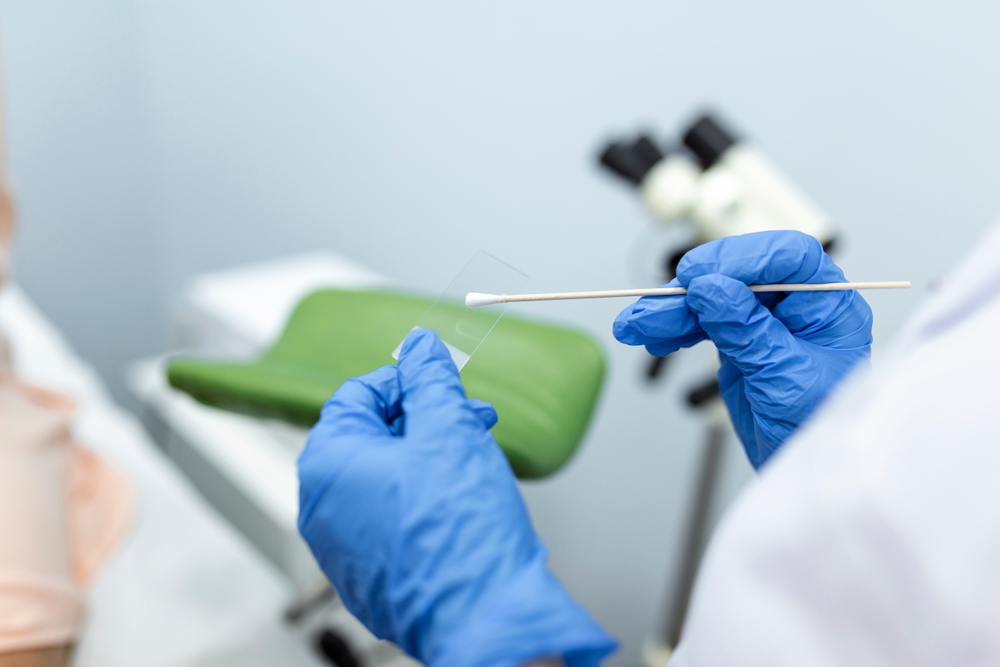Cervical cancer dysplasia refers to the presence of abnormal cells on the cervix, which can develop into cancer if it’s not identified and treated. Think of this condition as an early warning sign, which gives healthcare providers the chance to prevent more serious complications.
For this reason, screening and early intervention are absolutely critical. Understanding how quickly cervical dysplasia can progress helps inform better treatment and follow-up decisions.
In this article, we will take a look at four facts about mild dysplasia of cervix and whether it can escalate into cancer. We’ll also discuss the critical importance of consistent monitoring, address the rare possibility of CIN1 developing into cancer within 6 months, and introduce a cutting-edge tool — NOUL’s miLab™ CER.
Fact 1: What Does Mild Dysplasia of Cervix Mean?

Source: Shutterstock
When clinicians mention mild dysplasia of the cervix, they usually refer to CIN1 (Cervical Intraepithelial Neoplasia grade 1). In this condition, the abnormal cells affect the outermost layer of the cervical tissue. Although it might sound alarming, CIN1 is the mildest form of cervical dysplasia. In fact, it frequently goes away on its own, especially if a person’s immune system is strong.
Persistent HPV infection is the main culprit behind CIN1. However, other risk factors (e.g., smoking) can hinder the immune system’s capacity to clear the infection.
Early detection of CIN1 occurs through routine Pap smears and HPV testing. Because the progression rate of cervical dysplasia depends on multiple factors, any abnormalities that get detected early on are indispensable to reduce the chance of escalation.
In many instances, healthcare providers simply monitor CIN1, which is expected to regress without treatment. With that said, consistent follow-up is vital to ensure the lesion does not advance to higher stages.
Fact 2: How Fast Does Cervical Dysplasia Progress?
The question “How fast does cervical dysplasia progress?” doesn’t have a one-size-fits-all answer. Several factors influence the pace, including:
- A person’s immune system.
- General health status.
- The persistence of high-risk HPV types.
Some women may notice no change in their dysplasia for years. Conversely, others might see progression more quickly if the underlying causes remain without treatment.
One main concern that many patients have is whether it’s possible to go from CIN1 to cancer in 6 months. Although this scenario is extremely rare, rapid progression has been documented in individuals with weakened immunity or specific high-risk HPV strains. Therefore, it’s vital to attend all recommended screenings and follow-ups.
Outcomes for CIN1 fall into one of three categories:
Fact 3: Risk Factors That Influence Progression
Numerous variables impact how quickly cervical dysplasia progresses. The following stand out as the most significant:
Persistent high-risk HPV infection
HPV types such as 16 and 18 are closely linked to cervical cancer dysplasia. A prolonged infection poses a greater threat of progression.
Smoking
Tobacco use weakens immune defenses and can accelerate the transformation of mild dysplasia of cervix into higher-grade lesions.
Weakened immune system
People who live with HIV or those on immunosuppressive treatments may see faster changes in cervical cells.
Infrequent or lack of screening
Missing regular Pap smears or HPV tests prevents early detection, which allows minor abnormalities to advance unchecked.
Therefore, prevention relies on timely screenings such as pap tests and HPV vaccinations. The adoption of a healthier lifestyle (e.g., smoking cessation) also boosts the immune system’s ability to fight off HPV.
Fact 4: Can Mild Dysplasia of Cervix Turn Into Cancer?

Source: Flickr
One common question that patients ask is if mild dysplasia of cervix can become a full-blown cancer. In the majority of cases, CIN1 lesions undergo regression and never reach invasive cancer. When they do progress, they generally evolve into CIN2 or CIN3 before they can progress to cervical cancer dysplasia at more advanced stages. Nonetheless, the risk still exists.
Routine follow-up is the cornerstone of prevention. A Pap test and HPV check can detect early changes that predict a shift from CIN1 to CIN2 or CIN3. Although it’s true that some fear CIN1 to cancer in 6 months, such instances are uncommon.
Therefore, the question “How fast does cervical dysplasia progress?” relies on regular screening and lifestyle modifications.
This table summarizes the stages of cervical dysplasia and outcomes:
Conclusion

Source: NOUL
The early detection of cervical cancer dysplasia is important to prevent progression and ensure timely intervention. The identification of mild dysplasia of cervix at an early stage gives healthcare providers the best chance to stop its development into higher-grade lesions. Tools such as NOUL’s miLab™ CER take advantage of imaging and on-device AI to deliver precise assessments, which makes it easier for clinicians to decide if same-day treatment is warranted.
Features of miLab™ CER include automated solid staining, Next Generation Staining and Immunostaining (NGSI) technology, which standardizes sample preparation, and AI-driven analysis that refines the detection of minute cellular abnormalities. These advancements enable quick patient care, lower the rare occurrences of CIN1 to cancer, and support proactive cervical health management.
Visit the miLab™ CER product page to explore routine cervical health practices, and head to NOUL’s inquiry page to learn more or request a demonstration.

